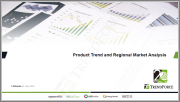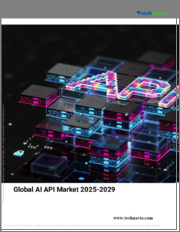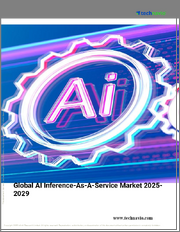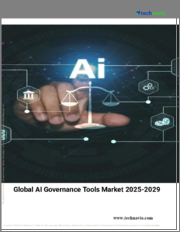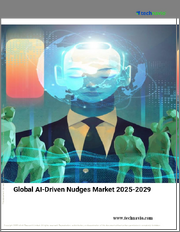
|
시장보고서
상품코드
1560933
인공지능 시장 보고서 : 유형, 오퍼링, 기술, 시스템, 최종사용자 산업, 지역별(2024-2032년)Artificial Intelligence Market Report by Type, Offering, Technology, System, End-Use Industry, and Region 2024-2032 |
||||||
세계의 인공지능 시장 규모는 2023년에 926억 달러에 달했습니다. 향후 IMARC Group은 2032년에는 7,371억 달러에 달하며, 2024-2032년 24.9%의 성장률(CAGR)을 보일 것으로 예측하고 있습니다. 클라우드 기반 솔루션 채택 증가, 자율주행차(AV) 판매량 증가, 만성질환 유병률 증가 등이 시장을 촉진하는 주요 요인으로 꼽힙니다.
인공지능(AI)은 기계, 특히 컴퓨터 시스템을 통해 인간의 지능 과정을 시뮬레이션하는 것을 말합니다. AI에는 기계가 학습, 추론, 문제 해결, 의사 결정과 같이 일반적으로 인간의 인지 기능이 필요한 작업을 수행할 수 있도록 하는 알고리즘과 시스템을 구축하는 것이 포함되며, AI에는 머신러닝, 자연어 처리, 컴퓨터 비전 등 다양한 기술이 포함됩니다. 는 컴퓨터가 명시적인 프로그래밍 없이도 데이터로부터 학습하고 예측과 의사결정을 내릴 수 있도록 하는 알고리즘을 개발하는 것을 포함합니다. 자연어 처리는 기계가 인간의 언어를 이해하고 해석할 수 있도록 하여 인간과 컴퓨터 간의 소통을 촉진합니다. 또한 컴퓨터 비전은 인간이 이미지를 인식하고 이해하는 방식과 유사하게 기계가 세상의 시각 정보를 해석하고 분석할 수 있게 해줍니다.
데이터 생성량의 급격한 증가와 고성능 컴퓨팅 리소스의 가용성으로 인해 AI 시스템은 방대한 데이터세트를 처리하고 분석할 수 있게 되었으며, 이는 고급 AI 알고리즘과 모델 개발을 촉진하고 있습니다. 또한 AI를 통한 자동화는 제조업에서 물류에 이르기까지 다양한 분야에서 업무를 간소화하고 효율성을 높일 수 있는 잠재력을 가지고 있습니다. 기업은 AI를 활용해 프로세스를 최적화하고 비용을 절감하며 전반적인 생산성을 향상시키고 있습니다. 이 외에도 AI를 활용한 알고리즘을 통해 기업은 고객에게 개인화된 경험을 제공하여 고객 참여와 만족도를 높일 수 있습니다. 추천 시스템, 챗봇, 가상 비서 등은 AI를 통해 고객의 취향을 이해하고 맞춤형 솔루션을 제공합니다. 이 외에도 AI는 진단, 신약 개발, 치료법 개발을 지원함으로써 헬스케어에 혁명을 불러일으키고 있습니다. 의료 영상 분석, 예측 분석, 유전체 연구 등은 AI가 주도하는 인사이트의 혜택을 누리고 있습니다. 이와 함께 스마트 기기와 사물인터넷(IoT)은 음성 인식, 얼굴 인식, 예지보전을 위해 AI를 통합하고 있으며, 가전제품의 AI 성장에 기여하고 있습니다. 또한 AI는 알고리즘 트레이딩, 사기 탐지, 위험 평가를 통해 금융 산업을 재구성하고 있습니다. 머신러닝 알고리즘은 시장 동향을 분석하고 투자 기회를 예측합니다. 또한 머신러닝 기술, 특히 딥러닝의 비약적인 발전은 이미지 인식, 자연어 이해, 예측 분석과 같은 작업에서 AI 시스템의 능력을 향상시켜 산업 전반에 걸쳐 폭넓게 적용되고 있습니다.
인공지능 시장 동향/촉진요인:
데이터의 확산과 처리 능력
디지털 시대는 고객의 행동 데이터부터 IoT 기기의 센서 데이터까지 전례 없는 양의 정보를 생산하고 있습니다. 이 풍부한 데이터는 AI 알고리즘과 모델 학습을 위한 기반이 되고 있습니다. 또한 GPU 및 특수 AI 하드웨어를 포함한 고성능 컴퓨팅 리소스를 사용할 수 있게 됨에 따라 연구자와 개발자는 이러한 방대한 데이터세트를 놀라운 속도로 처리하고 분석할 수 있게 되었습니다. 이러한 데이터 가용성과 처리 능력의 시너지 효과는 패턴을 인식하고, 예측하고, 이전에는 접근하기 어려웠던 인사이트을 도출할 수 있는 정교한 AI 시스템을 개발할 수 있는 가능성을 열어주었습니다.
머신러닝의 발전
신경망에서 영감을 받은 딥러닝 알고리즘은 이미지 인식, 자연어 이해, 음성 합성 등의 작업에서 탁월한 성능을 발휘하고 있습니다. 이러한 알고리즘은 원시 데이터로부터 계층적 특징을 자동으로 학습하는 데 탁월하며, 복잡한 작업을 놀라운 정확도로 수행할 수 있습니다. 딥러닝의 한 방법인 전이학습(transition learning)은 한 작업에서 미리 훈련된 모델을 다른 작업에 맞게 미세 조정할 수 있으며, 라벨이 붙은 방대한 양의 데이터에 대한 필요성을 줄여줍니다. 이러한 발전은 AI 개발의 진입장벽을 낮추고, 다양한 영역에서의 적용 가능성을 확대하며, 일상적인 기술 및 프로세스에 AI 솔루션의 통합을 촉진하고 있습니다.
자동화 및 효율성 향상
로보틱 프로세스 자동화(RPA)와 자율 시스템 등 AI 기술을 활용한 자동화는 그동안 귀중한 인적 자원을 소모했던 반복적이고 평범한 업무를 없애고 있습니다. 이러한 변화는 인간 노동자들이 창의성, 비판적 사고, 문제 해결이 필요한 더 가치 있는 업무에 집중할 수 있도록 돕습니다. 제조, 물류, 고객 서비스 등의 업계에서는 재고 관리부터 고객 응대까지 다양한 업무를 처리하기 위해 AI를 탑재한 로봇과 시스템을 도입하고 있습니다. 그 결과, 생산성이 향상될 뿐만 아니라 정확성과 일관성도 개선되고 있습니다. 기업은 AI가 업무를 혁신할 수 있는 잠재력을 인식하고, 인간의 능력을 확장하고 비즈니스 성장을 가속하는 자동화 솔루션을 광범위하게 도입하고 있습니다.
목차
제1장 서문
제2장 조사 범위와 조사 방법
- 조사의 목적
- 이해관계자
- 데이터 소스
- 1차 정보
- 2차 정보
- 시장 추정
- 보텀업 어프로치
- 톱다운 어프로치
- 조사 방법
제3장 개요
제4장 서론
- 개요
- 주요 업계 동향
제5장 세계의 인공지능 시장
- 시장 개요
- 시장 실적
- COVID-19의 영향
- 시장 예측
제6장 시장 내역 : 유형별
- 특화형/약한 인공지능
- 시장 동향
- 시장 예측
- 범용적/강력한 인공지능
- 시장 동향
- 시장 예측
제7장 시장 내역 : 제공별
- 하드웨어
- 시장 동향
- 시장 예측
- 소프트웨어
- 시장 동향
- 시장 예측
- 서비스
- 시장 동향
- 시장 예측
제8장 시장 내역 : 기술별
- 기계학습
- 시장 동향
- 시장 예측
- 자연언어처리
- 시장 동향
- 시장 예측
- 문맥 인식 컴퓨팅
- 시장 동향
- 시장 예측
- 컴퓨터 비전
- 시장 동향
- 시장 예측
- 기타
- 시장 동향
- 시장 예측
제9장 시장 내역 : 시스템별
- 인텔리전스 시스템
- 시장 동향
- 시장 예측
- 의사결정 지원 처리
- 시장 동향
- 시장 예측
- 하이브리드 시스템
- 시장 동향
- 시장 예측
- 퍼지 시스템
- 시장 동향
- 시장 예측
제10장 시장 내역 : 최종 용도 산업별
- 헬스케어
- 시장 동향
- 시장 예측
- 제조
- 시장 동향
- 시장 예측
- 자동차
- 시장 동향
- 시장 예측
- 농업
- 시장 동향
- 시장 예측
- 소매
- 시장 동향
- 시장 예측
- 보안
- 시장 동향
- 시장 예측
- 인사
- 시장 동향
- 시장 예측
- 마케팅
- 시장 동향
- 시장 예측
- 금융 서비스
- 시장 동향
- 시장 예측
- 운송·물류
- 시장 동향
- 시장 예측
- 기타
- 시장 동향
- 시장 예측
제11장 시장 내역 : 지역별
- 북미
- 미국
- 캐나다
- 아시아태평양
- 중국
- 일본
- 인도
- 한국
- 호주
- 인도네시아
- 기타
- 유럽
- 독일
- 프랑스
- 영국
- 이탈리아
- 스페인
- 러시아
- 기타
- 라틴아메리카
- 브라질
- 멕시코
- 기타
- 중동 및 아프리카
- 시장 동향
- 시장 내역 : 국가별
- 시장 예측
제12장 SWOT 분석
- 개요
- 강점
- 약점
- 기회
- 위협
제13장 밸류체인 분석
제14장 Porter's Five Forces 분석
- 개요
- 바이어의 교섭력
- 공급 기업의 교섭력
- 경쟁의 정도
- 신규 진출업체의 위협
- 대체품의 위협
제15장 가격 지표
제16장 경쟁 구도
- 시장 구조
- 주요 기업
- 주요 기업의 개요
- Amazon Web Services Inc.
- Apple Inc.
- Baidu
- Cisco Systems Inc.
- Facebook Inc.
- General Electric Company
- Google LLC(Alphabet Inc.)
- International Business Machines
- Intel Corporation
- Micron Technology Inc.
- Microsoft Corporation
- Nvidia Corporation
- Oracle Corporation
- Rockwell Automation Inc.
- Samsung Electronics Co. Ltd.
- SAP SE
- Siemens AG
The global artificial intelligence market size reached US$ 92.6 Billion in 2023. Looking forward, IMARC Group expects the market to reach US$ 737.1 Billion by 2032, exhibiting a growth rate (CAGR) of 24.9% during 2024-2032. The increasing adoption of cloud-based solutions, rising sales of autonomous vehicles (AVs), and the growing prevalence of chronic diseases represent some of the key factors driving the market.
Artificial intelligence (AI) refers to the simulation of human intelligence processes by machines, particularly computer systems. It involves the creation of algorithms and systems that enable machines to perform tasks that typically require human cognitive functions, such as learning, reasoning, problem-solving, and decision-making. AI encompasses a wide range of technologies, including machine learning, natural language processing, and computer vision. Machine learning, a subset of AI, involves the development of algorithms that allow computers to learn from and make predictions or decisions based on data without explicit programming. Natural language processing enables machines to understand and interpret human language, facilitating communication between humans and computers. Additionally, computer vision empowers machines to interpret and analyze visual information from the world, similar to the way humans perceive and understand images.
The exponential increase in data generation and the availability of high-performance computing resources have enabled AI systems to process and analyze massive datasets, fostering the development of advanced AI algorithms and models. Additionally, AI-driven automation has the potential to streamline operations and enhance efficiency in various sectors, from manufacturing to logistics. Businesses are leveraging AI to optimize processes, reduce costs, and improve overall productivity. Other than this, AI-powered algorithms enable businesses to offer personalized experiences to customers, enhancing engagement and satisfaction. Recommendation systems, chatbots, and virtual assistants use AI to understand customer preferences and deliver tailored solutions. Besides this, AI is revolutionizing healthcare by aiding in diagnostics, drug discovery, and treatment development. Medical imaging analysis, predictive analytics, and genomics research are benefiting from AI-driven insights. In line with this, smart devices and the Internet of Things (IoT) are integrating AI for voice recognition, facial recognition, and predictive maintenance, contributing to the growth of AI in consumer electronics. Furthermore, AI is reshaping the financial industry with algorithmic trading, fraud detection, and risk assessment. Machine learning algorithms analyze market trends and predict investment opportunities. Moreover, breakthroughs in machine learning techniques, particularly deep learning, have enhanced the capabilities of AI systems in tasks such as image recognition, natural language understanding, and predictive analytics, leading to broader applications across industries.
Artificial Intelligence Market Trends/Drivers:
Data Proliferation and Processing Power
The digital age has generated an unprecedented amount of information, ranging from customer behavior data to sensor data from IoT devices. This wealth of data serves as the foundation for training AI algorithms and models. Moreover, the availability of high-performance computing resources, including GPUs and specialized AI hardware, has empowered researchers and developers to process and analyze these vast datasets at remarkable speeds. This synergy between data availability and processing power has unlocked the potential to develop sophisticated AI systems capable of recognizing patterns, making predictions, and deriving insights that were previously inaccessible.
Advancements in Machine Learning
Deep learning algorithms, inspired by neural networks, have shown exceptional performance in tasks such as image recognition, natural language understanding, and speech synthesis. These algorithms excel at automatically learning hierarchical features from raw data, enabling them to perform complex tasks with remarkable accuracy. Transfer learning, a technique within deep learning, allows models pre-trained on one task to be fine-tuned for another, reducing the need for extensive labeled data. Such advancements have lowered the barriers to entry for AI development and expanded its applicability in various domains, driving the integration of AI solutions into everyday technologies and processes.
Automation and Efficiency
Automation powered by AI technologies, such as robotic process automation (RPA) and autonomous systems, is eliminating repetitive and mundane tasks that previously consumed valuable human resources. This shift allows human workers to focus on higher-value tasks that require creativity, critical thinking, and problem-solving. Industries like manufacturing, logistics, and customer service are deploying AI-powered robots and systems to handle tasks ranging from inventory management to customer interactions. The result is not only increased productivity but also improved accuracy and consistency. Businesses are recognizing the potential of AI to transform their operations, leading to the widespread adoption of automation solutions that augment human capabilities and drive business growth.
Artificial Intelligence Industry Segmentation:
IMARC Group provides an analysis of the key trends in each segment of the global artificial intelligence market report, along with forecasts at the global, regional and country levels from 2024-2032. Our report has categorized the market based on type, offering, technology, system and end-use industry.
Breakup by Type:
- Narrow/Weak Artificial Intelligence
- General/Strong Artificial Intelligence
Narrow/weak artificial intelligence dominates the market
The report has provided a detailed breakup and analysis of the market based on the type. This includes narrow/weak artificial intelligence and general/strong artificial intelligence. According to the report, narrow/weak artificial intelligence represented the largest segment.
Unlike general or strong AI, which aims to replicate human-like cognitive abilities across a wide range of tasks, narrow AI is designed to excel in specific, well-defined tasks. This focused approach allows for more efficient development and deployment. Narrow AI technologies, such as machine learning and natural language processing, have demonstrated remarkable proficiency in tasks like image recognition, language translation, virtual assistants, and recommendation systems. This effectiveness has led to rapid adoption in sectors like healthcare, finance, e-commerce, and manufacturing, where the immediate benefits of automation, efficiency, and data-driven insights are highly valued. Additionally, the development of narrow AI systems often requires less complex algorithms and data, making it more accessible for businesses to implement and integrate into their existing workflows.
Breakup by Offering:
- Hardware
- Software
- Services
Software holds the largest share in the market
A detailed breakup and analysis of the market based on the offering has also been provided in the report. This includes hardware, software, and services. According to the report, software accounted for the largest market share.
In the industry of artificial intelligence (AI), software plays a pivotal role as it serves as the foundation for developing, deploying, and managing AI applications. The accessibility of AI software frameworks, libraries, and tools has lowered the entry barriers for businesses, researchers, and developers to experiment with and integrate AI capabilities into their operations. Software offerings encompass a wide array of AI applications, from machine learning platforms to natural language processing APIs. This flexibility allows organizations to tailor AI solutions to their specific needs, whether it's optimizing supply chains, personalizing customer experiences, or automating decision-making processes. Furthermore, the cloud-based nature of many AI software solutions enables seamless scalability and updates, ensuring that businesses can stay abreast of the latest advancements without significant infrastructure investments.
Breakup by Technology:
- Machine Learning
- Natural Language Processing
- Context-Aware Computing
- Computer Vision
- Others
Machine learning is the most widely used technology
The report has provided a detailed breakup and analysis of the market based on technology. This includes machine learning, natural language processing, context-aware computing, computer vision, and others. According to the report, machine learning represented the largest segment.
AI software serves as the intellectual core, housing algorithms, models, and data processing mechanisms that empower machines to simulate human cognitive functions. This software-driven approach offers unparalleled flexibility, enabling developers and businesses to tailor AI solutions to a diverse range of applications across industries. The accessibility of AI software tools and platforms has democratized AI development, allowing organizations to integrate AI functionalities into existing workflows and applications without extensive hardware investments. This accessibility, coupled with the rapid advancements in AI algorithms and techniques, ensures that software remains at the forefront of AI innovation. Moreover, the cloud-based deployment of AI software solutions facilitates scalability and updates, ensuring that businesses can stay current with the evolving AI landscape.
Breakup by System:
- Intelligence Systems
- Decision Support Processing
- Hybrid Systems
- Fuzzy Systems
Intelligence systems hold the largest share in the market
A detailed breakup and analysis of the market based on the system has also been provided in the report. This includes intelligence systems, decision support processing, hybrid systems, and fuzzy systems. According to the report, intelligence systems accounted for the largest market share.
Intelligence systems encompass a wide array of applications, ranging from virtual assistants and chatbots to advanced recommendation engines and predictive analytics platforms. These systems leverage AI algorithms to process vast amounts of data, derive meaningful insights, and facilitate informed decision-making. The appeal of intelligence systems lies in their ability to enhance efficiency, accuracy, and customer engagement across various sectors. Virtual assistants streamline customer interactions, while recommendation engines personalize user experiences, both of which contribute to improved satisfaction and retention. Furthermore, intelligence systems enable predictive analytics, enabling businesses to anticipate trends and optimize strategies.
Breakup by End-Use Industry:
- Healthcare
- Manufacturing
- Automotive
- Agriculture
- Retail
- Security
- Human Resources
- Marketing
- Financial Services
- Transportation and Logistics
- Others
Manufacturing represents the largest segment
The report has provided a detailed breakup and analysis of the market based on end-use industry. This includes healthcare, manufacturing, automotive, agriculture, retail, security, human resources, marketing, financial services, transportation and logistics, and others. According to the report, manufacturing represented the largest segment.
AI technologies are revolutionizing manufacturing by enhancing operational efficiency, quality control, and product innovation. AI-driven automation optimizes production processes, leading to reduced downtime, higher productivity, and improved resource utilization. Manufacturing involves intricate tasks such as predictive maintenance, where AI algorithms analyze equipment data to predict maintenance needs, preventing costly breakdowns. Quality control benefits from AI-powered visual inspection systems that detect defects with exceptional accuracy. Additionally, AI-driven analytics aid in demand forecasting and supply chain optimization, ensuring efficient inventory management and minimizing production bottlenecks.
Breakup by Region:
- North America
- United States
- Canada
- Asia Pacific
- China
- Japan
- India
- South Korea
- Australia
- Indonesia
- Others
- Europe
- Germany
- France
- United Kingdom
- Italy
- Spain
- Russia
- Others
- Latin America
- Brazil
- Mexico
- Others
- Middle East and Africa
North America exhibits a clear dominance in the market
The report has also provided a comprehensive analysis of all the major regional markets, which include North America (the United States and Canada); Europe (Germany, France, the United Kingdom, Italy, Spain, Russia, and others); Asia Pacific (China, Japan, India, South Korea, Australia, Indonesia, and others); Latin America (Brazil, Mexico, and others); and the Middle East and Africa. According to the report, North America was the largest market for artificial intelligence.
North America possesses a dense concentration of tech giants, research institutions, and startups, facilitating knowledge exchange and collaboration. Silicon Valley, in particular, serves as a global hub for AI research and development. The availability of venture capital funding in North America accelerates AI-driven entrepreneurship and disruptive solutions. Additionally, a skilled workforce proficient in AI technologies contributes to the region's competitive advantage. Major industries, including technology, healthcare, finance, and manufacturing, heavily invest in AI to gain a competitive edge, driving the market's growth. Moreover, North American governments promote AI research through funding and supportive policies. Collaboration between academia and industry propels AI advancements, while a receptive consumer base encourages AI adoption in products and services.
Competitive Landscape:
Major technology companies like Google, Microsoft, and IBM invest significantly in AI research and development, contributing to breakthroughs in algorithms, natural language processing, and machine learning frameworks. Additionally, tech leaders such as Facebook, OpenAI, and NVIDIA contribute to open-source AI projects, democratizing access to AI tools and accelerating development by fostering collaboration among developers. Other than this, organizations such as Apple, Amazon, and Intel acquire AI startups to harness their expertise and innovative solutions. Partnerships with research institutions and other industry players foster knowledge exchange and technology sharing. Besides this, financial institutions like JPMorgan Chase utilize AI for risk assessment, fraud detection, and trading algorithms, enhancing accuracy and decision-making.
The market research report has provided a comprehensive analysis of the competitive landscape in the market. Detailed profiles of all major companies have also been provided. Some of the key players in the market include:
- Amazon Web Services Inc.
- Apple Inc.
- Baidu
- Cisco Systems Inc.
- Facebook Inc.
- General Electric Company
- Google LLC (Alphabet Inc.)
- International Business Machines
- Intel Corporation
- Micron Technology Inc.
- Microsoft Corporation
- Nvidia Corporation
- Oracle Corporation
- Rockwell Automation Inc.
- Samsung Electronics Co. Ltd.
- SAP SE
- Siemens AG
Recent Developments:
- Google LLC revealed the introduction of two advanced AI-powered solutions: the Target and Lead Identification Suite, along with the Multiomics Suite, designed specifically for the life sciences sector. These innovative offerings are designed to address the intricate challenges faced within the industry. The Target and Lead Identification Suite is engineered to streamline the process of identifying potential targets and leads, contributing to more efficient drug discovery and development. On the other hand, the Multiomics Suite, a sophisticated tool, facilitates comprehensive analysis by integrating diverse omics data, thereby enhancing insights into complex biological systems.
- International Business Machines introduced its latest security solution known as the IBM Security QRadar Suite by integrating powerful analytics and threat detection capabilities, to fortify their security posture and safeguard sensitive data. This comprehensive suite is strategically designed to address the evolving landscape of cybersecurity challenges. With a focus on bolstering security measures, the IBM Security QRadar Suite combines advanced technologies and methodologies to provide a robust defense against modern threats. This suite encompasses a range of tools and features that enable organizations to proactively identify, analyze, and respond to potential security breaches.
- Cisco Systems Inc. recently unveiled a series of AI-powered innovations for its Webex collaboration platform. These advancements represent Cisco's commitment to enhancing the collaborative experience and efficiency of its users. By integrating artificial intelligence, the Webex collaboration platform aims to elevate virtual interactions to a new level of effectiveness.
Key Questions Answered in This Report
- 1. What was the size of the global artificial intelligence market in 2023?
- 2. What is the expected growth rate of the global artificial intelligence market during 2024-2032?
- 3. What are the key factors driving the global artificial intelligence market?
- 4. What has been the impact of COVID-19 on the global artificial intelligence market?
- 5. What is the breakup of the global artificial intelligence market based on the type?
- 6. What is the breakup of the global artificial intelligence market based on the offering?
- 7. What is the breakup of the global artificial intelligence market based on the technology?
- 8. What is the breakup of the global artificial intelligence market based on the system?
- 9. What is the breakup of the global artificial intelligence market based on the end-use industry?
- 10. What are the key regions in the global artificial intelligence market?
- 11. Who are the key players/companies in the global artificial intelligence market?
Table of Contents
1 Preface
2 Scope and Methodology
- 2.1 Objectives of the Study
- 2.2 Stakeholders
- 2.3 Data Sources
- 2.3.1 Primary Sources
- 2.3.2 Secondary Sources
- 2.4 Market Estimation
- 2.4.1 Bottom-Up Approach
- 2.4.2 Top-Down Approach
- 2.5 Forecasting Methodology
3 Executive Summary
4 Introduction
- 4.1 Overview
- 4.2 Key Industry Trends
5 Global Artificial Intelligence Market
- 5.1 Market Overview
- 5.2 Market Performance
- 5.3 Impact of COVID-19
- 5.4 Market Forecast
6 Market Breakup by Type
- 6.1 Narrow/Weak Artificial Intelligence
- 6.1.1 Market Trends
- 6.1.2 Market Forecast
- 6.2 General/Strong Artificial Intelligence
- 6.2.1 Market Trends
- 6.2.2 Market Forecast
7 Market Breakup by Offering
- 7.1 Hardware
- 7.1.1 Market Trends
- 7.1.2 Market Forecast
- 7.2 Software
- 7.2.1 Market Trends
- 7.2.2 Market Forecast
- 7.3 Services
- 7.3.1 Market Trends
- 7.3.2 Market Forecast
8 Market Breakup by Technology
- 8.1 Machine Learning
- 8.1.1 Market Trends
- 8.1.2 Market Forecast
- 8.2 Natural Language Processing
- 8.2.1 Market Trends
- 8.2.2 Market Forecast
- 8.3 Context-Aware Computing
- 8.3.1 Market Trends
- 8.3.2 Market Forecast
- 8.4 Computer Vision
- 8.4.1 Market Trends
- 8.4.2 Market Forecast
- 8.5 Others
- 8.5.1 Market Trends
- 8.5.2 Market Forecast
9 Market Breakup by System
- 9.1 Intelligence Systems
- 9.1.1 Market Trends
- 9.1.2 Market Forecast
- 9.2 Decision Support Processing
- 9.2.1 Market Trends
- 9.2.2 Market Forecast
- 9.3 Hybrid Systems
- 9.3.1 Market Trends
- 9.3.2 Market Forecast
- 9.4 Fuzzy Systems
- 9.4.1 Market Trends
- 9.4.2 Market Forecast
10 Market Breakup by End-Use Industry
- 10.1 Healthcare
- 10.1.1 Market Trends
- 10.1.2 Market Forecast
- 10.2 Manufacturing
- 10.2.1 Market Trends
- 10.2.2 Market Forecast
- 10.3 Automotive
- 10.3.1 Market Trends
- 10.3.2 Market Forecast
- 10.4 Agriculture
- 10.4.1 Market Trends
- 10.4.2 Market Forecast
- 10.5 Retail
- 10.5.1 Market Trends
- 10.5.2 Market Forecast
- 10.6 Security
- 10.6.1 Market Trends
- 10.6.2 Market Forecast
- 10.7 Human Resources
- 10.7.1 Market Trends
- 10.7.2 Market Forecast
- 10.8 Marketing
- 10.8.1 Market Trends
- 10.8.2 Market Forecast
- 10.9 Financial Services
- 10.9.1 Market Trends
- 10.9.2 Market Forecast
- 10.10 Transportation and Logistics
- 10.10.1 Market Trends
- 10.10.2 Market Forecast
- 10.11 Others
- 10.11.1 Market Trends
- 10.11.2 Market Forecast
11 Market Breakup by Region
- 11.1 North America
- 11.1.1 United States
- 11.1.1.1 Market Trends
- 11.1.1.2 Market Forecast
- 11.1.2 Canada
- 11.1.2.1 Market Trends
- 11.1.2.2 Market Forecast
- 11.1.1 United States
- 11.2 Asia Pacific
- 11.2.1 China
- 11.2.1.1 Market Trends
- 11.2.1.2 Market Forecast
- 11.2.2 Japan
- 11.2.2.1 Market Trends
- 11.2.2.2 Market Forecast
- 11.2.3 India
- 11.2.3.1 Market Trends
- 11.2.3.2 Market Forecast
- 11.2.4 South Korea
- 11.2.4.1 Market Trends
- 11.2.4.2 Market Forecast
- 11.2.5 Australia
- 11.2.5.1 Market Trends
- 11.2.5.2 Market Forecast
- 11.2.6 Indonesia
- 11.2.6.1 Market Trends
- 11.2.6.2 Market Forecast
- 11.2.7 Others
- 11.2.7.1 Market Trends
- 11.2.7.2 Market Forecast
- 11.2.1 China
- 11.3 Europe
- 11.3.1 Germany
- 11.3.1.1 Market Trends
- 11.3.1.2 Market Forecast
- 11.3.2 France
- 11.3.2.1 Market Trends
- 11.3.2.2 Market Forecast
- 11.3.3 United Kingdom
- 11.3.3.1 Market Trends
- 11.3.3.2 Market Forecast
- 11.3.4 Italy
- 11.3.4.1 Market Trends
- 11.3.4.2 Market Forecast
- 11.3.5 Spain
- 11.3.5.1 Market Trends
- 11.3.5.2 Market Forecast
- 11.3.6 Russia
- 11.3.6.1 Market Trends
- 11.3.6.2 Market Forecast
- 11.3.7 Others
- 11.3.7.1 Market Trends
- 11.3.7.2 Market Forecast
- 11.3.1 Germany
- 11.4 Latin America
- 11.4.1 Brazil
- 11.4.1.1 Market Trends
- 11.4.1.2 Market Forecast
- 11.4.2 Mexico
- 11.4.2.1 Market Trends
- 11.4.2.2 Market Forecast
- 11.4.3 Others
- 11.4.3.1 Market Trends
- 11.4.3.2 Market Forecast
- 11.4.1 Brazil
- 11.5 Middle East and Africa
- 11.5.1 Market Trends
- 11.5.2 Market Breakup by Country
- 11.5.3 Market Forecast
12 SWOT Analysis
- 12.1 Overview
- 12.2 Strengths
- 12.3 Weaknesses
- 12.4 Opportunities
- 12.5 Threats
13 Value Chain Analysis
14 Porters Five Forces Analysis
- 14.1 Overview
- 14.2 Bargaining Power of Buyers
- 14.3 Bargaining Power of Suppliers
- 14.4 Degree of Competition
- 14.5 Threat of New Entrants
- 14.6 Threat of Substitutes
15 Price Indicators
16 Competitive Landscape
- 16.1 Market Structure
- 16.2 Key Players
- 16.3 Profiles of Key Players
- 16.3.1 Amazon Web Services Inc.
- 16.3.1.1 Company Overview
- 16.3.1.2 Product Portfolio
- 16.3.2 Apple Inc.
- 16.3.2.1 Company Overview
- 16.3.2.2 Product Portfolio
- 16.3.2.3 Financials
- 16.3.2.4 SWOT Analysis
- 16.3.3 Baidu
- 16.3.3.1 Company Overview
- 16.3.3.2 Product Portfolio
- 16.3.4 Cisco Systems Inc.
- 16.3.4.1 Company Overview
- 16.3.4.2 Product Portfolio
- 16.3.4.3 Financials
- 16.3.4.4 SWOT Analysis
- 16.3.5 Facebook Inc.
- 16.3.5.1 Company Overview
- 16.3.5.2 Product Portfolio
- 16.3.5.3 Financials
- 16.3.5.4 SWOT Analysis
- 16.3.6 General Electric Company
- 16.3.6.1 Company Overview
- 16.3.6.2 Product Portfolio
- 16.3.6.3 Financials
- 16.3.6.4 SWOT Analysis
- 16.3.7 Google LLC (Alphabet Inc.)
- 16.3.7.1 Company Overview
- 16.3.7.2 Product Portfolio
- 16.3.7.3 SWOT Analysis
- 16.3.8 International Business Machines
- 16.3.8.1 Company Overview
- 16.3.8.2 Product Portfolio
- 16.3.8.3 Financials
- 16.3.8.4 SWOT Analysis
- 16.3.9 Intel Corporation
- 16.3.9.1 Company Overview
- 16.3.9.2 Product Portfolio
- 16.3.9.3 Financials
- 16.3.9.4 SWOT Analysis
- 16.3.10 Micron Technology Inc.
- 16.3.10.1 Company Overview
- 16.3.10.2 Product Portfolio
- 16.3.10.3 Financials
- 16.3.10.4 SWOT Analysis
- 16.3.11 Microsoft Corporation
- 16.3.11.1 Company Overview
- 16.3.11.2 Product Portfolio
- 16.3.11.3 Financials
- 16.3.11.4 SWOT Analysis
- 16.3.12 Nvidia Corporation
- 16.3.12.1 Company Overview
- 16.3.12.2 Product Portfolio
- 16.3.12.3 Financials
- 16.3.12.4 SWOT Analysis
- 16.3.13 Oracle Corporation
- 16.3.13.1 Company Overview
- 16.3.13.2 Product Portfolio
- 16.3.13.3 Financials
- 16.3.13.4 SWOT Analysis
- 16.3.14 Rockwell Automation Inc.
- 16.3.14.1 Company Overview
- 16.3.14.2 Product Portfolio
- 16.3.14.3 Financials
- 16.3.14.4 SWOT Analysis
- 16.3.15 Samsung Electronics Co. Ltd.
- 16.3.15.1 Company Overview
- 16.3.15.2 Product Portfolio
- 16.3.15.3 Financials
- 16.3.15.4 SWOT Analysis
- 16.3.16 SAP SE
- 16.3.16.1 Company Overview
- 16.3.16.2 Product Portfolio
- 16.3.16.3 Financials
- 16.3.16.4 SWOT Analysis
- 16.3.17 Siemens AG
- 16.3.17.1 Company Overview
- 16.3.17.2 Product Portfolio
- 16.3.17.3 Financials
- 16.3.17.4 SWOT Analysis
- 16.3.1 Amazon Web Services Inc.







